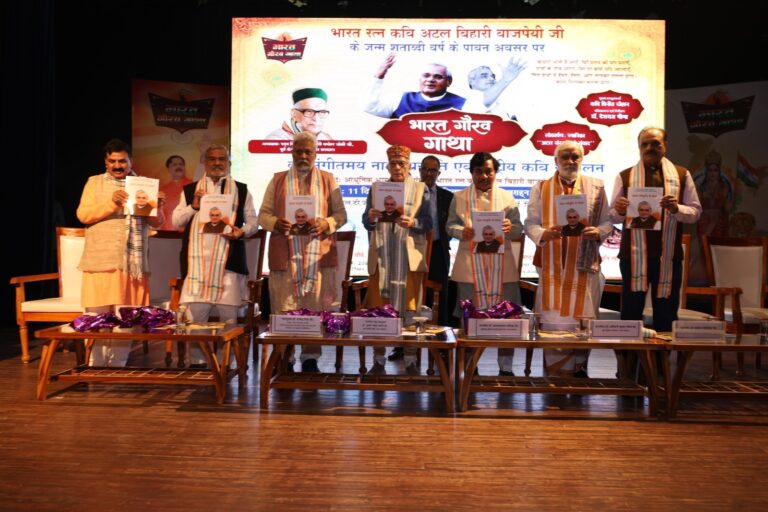
New Delhi: The Union Ministry of Labour and Employment today rebutted a recent research report by Citigroup on Employment in India which forecasts that India will struggle to create sufficient employment opportunities even with a 7% growth rate.
“It is well known that the private data sources have several shortcomings. These surveys use their own derived definition of employment – unemployment which is not aligned to either national or international standards…Further, some authors use data selectively which undermines the credibility of their analysis and does not present an accurate picture of the employment scenario in India. Such reports fail to consider the positive trends and comprehensive data from official sources,” the Ministry stated.
The Ministry referred to the official data sources like the Periodic Labour Force Survey (PLFS) and the Reserve Bank of India’s KLEMS data, the Employees’ Provident Fund Organization (EPFO), that showed “consistent improvements” in the key labour market indicators, including increased Labour Force Participation Rate (LFPR) and Worker Population Ratio (WPR), and a declining Unemployment Rate during last five years.
“EPFO and NPS data further support the positive employment trends. The trends in manufacturing, expanding service sector, and infrastructure growth, apart from others, including emerging opportunities in multiple sectors such as gig and platform economy and the Global Capability Centers (GCCs) indicate robust future prospects,” the Ministry stated. It claimed that Citigroup failed to account for the comprehensive and positive employment data available from official sources in the public domain, such as the PLFS and the RBI’s KLEMS [capital (K), labour (L), energy (E), materials (M) and service (S)] data.
According to PLFS and RBI’s KLEMS data, India generated more than 8 crore (80 million) employment opportunities from 2017-18 to 2021-22.
“This translates to an average of over 2 crore (20 million) employment per year, despite the fact that the world economy was hit by the COVID-19 pandemic during 2020-21 which contradicts Citigroup’s assertion of India’s inability to generate sufficient employment,” the Ministry claimed. It added that “this significant employment creation demonstrates the effectiveness of various government initiatives aimed at boosting employment across sectors”.
The annual PLFS report depicts an improving trend in labour market indicators related to (i) Labour Force Participation Rate (LFPR), (ii) Worker Population Ratio (WPR) and (iii) Unemployment Rate (UR) for persons aged 15 years and above during 2017-18 to 2022-23.
The Ministry pointed out that the WPR employment increased from 46.8% in 2017-18 to 56% in 2022-23, while the labour force participation also increased in the country from 49.8% in 2017-18 to 57.9% in 2022-23. The unemployment rate declined from 6.0 % in 2017-18 to a low of 3.2% in 2022-23.
“The PLFS data shows that during the last 5 years, more employment opportunities have been generated compared to the number of people joining the labour force, resulting in a consistent reduction in the unemployment rate. This is a clear indicator of the positive impact of government policies on employment. Contrary to the Citigroup report, which suggests a dire employment scenario, the official data reveals a more optimistic picture of the Indian job market,” the Ministry stated.
Referring to the EPFO data, the Ministry noted that the formal sector employment figures were also being bolstered by government efforts to improve ease of doing business, enhance skill development, and provide incentives for job creation in both the public and private sectors.
“The EPFO data suggests that more and more workers are joining formal jobs. During 2023-24, more than 1.3 crore subscribers joined EPFO which is more than double compared to 61.12 lakh who joined EPFO during 2018-19. Moreover, during the last six and half years (from September 2017 to March 2024) more than 6.2 crore net subscribers have joined EPFO,” it pointed out.
It also referred to the data from the National Pension System (NPS) which indicated that more than 7.75 lakh new subscribers joined the NPS during 2023-24 under the Central and State governments which are 30% more than 5.94 lakh new subscribers joining NPS under government sector during 2022-23.
“This substantial increase in new subscribers highlights the government’s proactive measures to fill up the vacancies in the public sector in a timely manner,” the Ministry claimed. It also disclosed that in a recent interaction of Indian Staffing Federation (ISF) members with the Secretary, Ministry of Labour and Employment, ISF members informed that they were employing about 5.4 million formal contract workers. “Nearly 30% of demand in the sector remains unfulfilled at the frontline across manufacturing, retail, and banking due to talent shortages and labour mobility,” it revealed.
The Ministry claimed that the future prospects of the employment market in India “are highly encouraging, as evidenced by data from various sources”.
“The Global Capability Centers (GCCs) in India have shown remarkable growth in recent years. The gig economy also promises a significant increase in the workforce in the country. Notably, the NITI Aayog report on the gig economy projects a substantial increase in platform workers, which is expected to reach 2.35 crore (23.5 million) by 2029-30, underscoring the rapid expansion of the gig economy. The gig workers are expected to form 6.7% of the non-agricultural workforce or 4.1% of the total livelihood in India by 2029-30. These developments collectively reflect India’s robust economic trajectory and its potential to generate diverse employment opportunities,” the Ministry stated.
The Ministry of Labour and Employment further emphasized the credibility and comprehensiveness of official data, cautioning against the selective use of private data sources that can lead to “misleading conclusions” about India’s employment scenario.
– global bihari bureau





